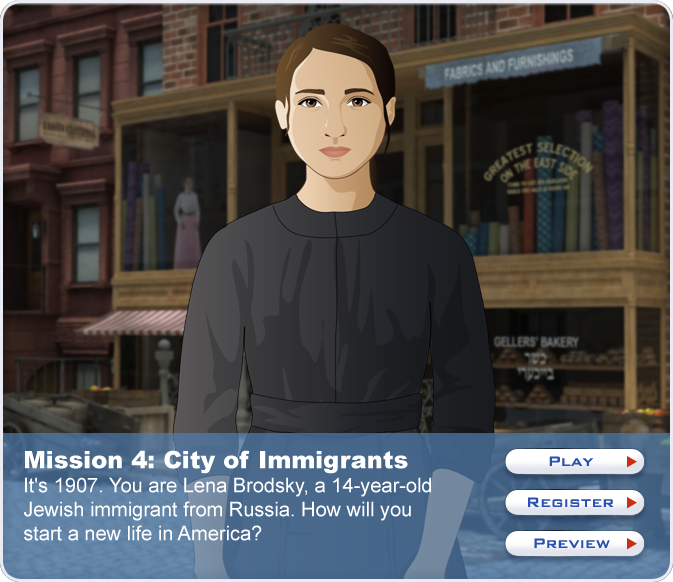Blog Archive
Playing With History
As a child, Oregon Trail was my first foray into the wonderful world of historical video games. It was a thriller set in year 1848 with a choose-your-own-adventure format. The stakes were high and survival was not assured. My fellow 5th grade classmates all worked diligently to earn a coveted spot at our single classroom computer where we could play the game and guide our covered wagon through the harsh realities of 19th century pioneer life. It’s from Oregon Train that I learned about hunting and hunger, and diseases like cholera and typhoid. Most importantly I learned how impactful my choices are to the survival of my family and community.
Oregon Trail is still played, but since it was first developed back in 1971, educational technology has greatly advanced. While my 5th grade experience with Oregon Trail served as a reward for good behavior, today video games are fully integrated into curriculum and used as tools to actively engage students in content and guide their discovery and learning.
MISSION US is a prime example of the power of video games to bring history to life and make it relevant. This multimedia project produced by WNET THIRTEEN immerses players in U.S. history content through free interactive games. The latest one, Mission 4, “City of Immigrants” introduces players to the noisy streets of New York’s Lower East Side at the turn of the twentieth century. It’s a story the Tenement Museum tells each day on our Sweatshop Workers tour, making us uniquely qualified to serve as partners on the game creation.
In “City of Immigrants” players trace the story of Lena, a young Jewish immigrant from Russia who navigates this new world. While Lena is a fictional character, her story is based upon the actual experience that millions of immigrants went through at the turn of the twentieth century.
Throughout the game, players make choices for Lena and grapple with difficult decisions about family and work life. How will she earn and spend her money? Will she go to Coney Island or the dance hall or save her funds to bring her parents to New York? Should she go on strike to protest bad conditions at the risk of losing her job? The decisions are difficult and the drama high.
Interestingly, the dynamism of the game shares three significant parallels to the power of a museum experience:
BRINGS HISTORY TO LIFE. Like a visit to the Tenement Museum, Mission 4 is a portal to the past. Players explore the sounds and sites of New York in the early 1900s as they navigate the five parts of the game. History comes alive through the bustling setting of the city streets and the voices of its people, and curiosity is nurtured. Historic events are not just part of a timeline, but unfold in real time.
MAKES HISTORY PERSONAL. One of the best ways to begin to understand someone else’s experience is to imagine it. Museum visits and games like Mission 4 offer entry points to explore the lived experience of others and consider life from the vantage of another person’s point-of-view. In this way, history stops being seen as a chapter in a textbook, but becomes personal as the player’s actions impact what happens next in the story.
BRIDGES PAST AND PRESENT. History is relevant. The goal of learning it is not to simply know about what happened, but to understand its impact on life today. The past informs the present, just as our actions influence what happens in the future. It’s why the stories we tell at the Museum are so vital and why playing Mission 4 will not only help students to understand life 100 years ago, but also to realize how their choices impact what happens in the adventure of life.
– Post by Miriam Bader
